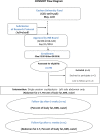Cryolipolysis-induced abdominal fat change: Split-body trials
- PMID: 33373395
- PMCID: PMC7771684
- DOI: 10.1371/journal.pone.0242782
Cryolipolysis-induced abdominal fat change: Split-body trials
Abstract
Cryolipolysis has been considered as a noninvasive alternative to surgical procedures for reducing subcutaneous fat without affecting the surrounding tissues. However, no clinical trial has investigated changes in the abdominal fat tissue by 12 weeks after cryolipolysis. Therefore, in this split-body trial, we explored whether a single session of unilateral cryolipolysis could change visceral and subcutaneous adipose tissue over a period of 12 weeks. We compared the cross-sectional areas of the abdominal adipose tissue of 15 subjects (9 women; 38.3 [10.8] years) by computed tomography before and at 12 weeks after a single treatment of cryolipolysis to the left abdomen and used the right abdomen as untreated control. In addition, we measured participants' waist circumference, percentage of body fat (by bioelectrical impedance analysis) at baseline and at 6- and 12-weeks post-treatment. Single unilateral cryolipolysis tended to reduce the cross-sectional areas of visceral adipose tissue, by 8.4 cm2 (9.9%), the waist circumferences, and the percent body fat, by 2.8 cm2 (0.6%), overall. The cross-sectional area of visceral adipose tissues on the treated side significantly decreased, by 6.8 cm2 (15.6%; P = 0.003), and that of the untreated side tended to decrease by 1.2 cm2 (3.6%). Thus, a single unilateral session of noninvasive selective cryolipolysis can be considered as a safe and effective treatment for reduction of visceral adipose tissue over a period of 12 weeks, which should result in metabolic improvement.
Conflict of interest statement
No authors have competing interests
Figures





References
Publication types
MeSH terms
LinkOut - more resources
Full Text Sources

